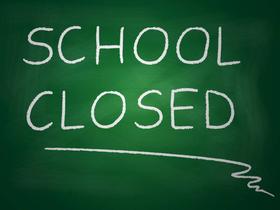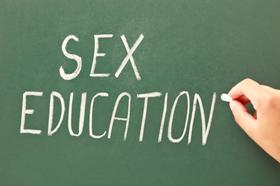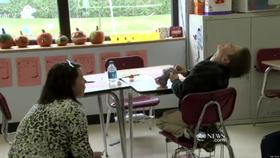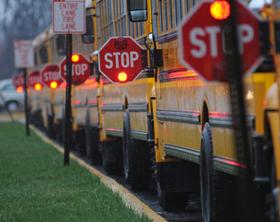It's a hard pill to swallow: budgets tightening for public school districts across the country and school officials dealing with the unpleasant task of painfully determining what stays and what must go. However, many school districts are getting creative with their efforts to make ends meet, and some are finding ways to trim the budget without sacrificing the quality of education to do so. Others are not so lucky, as job eliminations are forcing larger class sizes and fewer extracurricular programs. We'll examine some of the ways public schools are finding ways to make ends meet in the wake of severe budget cuts across the country.
Restructuring Continuing in Detroit
No one understands the impact of budget cuts better than the Detroit Public Schools district, which has been hit hard, as the economy in the area is one of the slowest in the country. The district is currently in the midst of a consolidation and closure plan that is attempting to align open schools and available services with student needs. According to an article at Click on Detroit, the moves are designed to cut operating costs without sacrificing services or facilities for the students that need them most.
Roy S. Roberts, emergency manager for the school district, told Click on Detroit, "There continues to be overcapacity for the number of students that we serve despite the closings that have occurred, and while the moves we are announcing today bring DPS more in line with the number of classrooms needed to meet enrollment projections for the next five years and create a plan to continue to downsize excess facilities."
As DPS continues work on the consolidation and closure plan, some schools may be closed that were previously expected to stay open. By the same token, some schools slated for closure may remain open. The choices continue to fluctuate as the district makes regular evaluations of capacity figures and population patterns within the communities the schools serve. Currently, the plan is slated to remove a net 15 buildings from operation between January of this year and September of next. Some schools will also transition into updated buildings during that time frame.
In this video, Tommy Whitten, the technology coordinator for Madison County Schools, talks about useful cost-cutting measures in tough times.
Shorter School Year Planned for Ohio
In Ohio, school officials are looking at a very different solution to their state budget woes. If some of the lawmakers in this state have their way, Ohio school students will be enjoying a shorter academic year and a longer summer break next year. According to a report at Cincinnati.com, the state is considering a bill that would prohibit schools from remaining open past Memorial Day or opening before Labor Day. This simple move could result in millions of dollars getting pumped into the local economy because the tourism season could be effectively extended throughout the state.
Currently, Ohio school districts get to decide on their calendars each year, as long as they ensure students are in school for 182 days. Most of the schools in the state start long before Labor Day to ensure they get a full academic year in. The new law would switch the state mandate from a day count to an hour count. This would allow schools to maintain their current academic year through fewer days and longer hours at school in each day. The bill is still up for discussion, and residents seem somewhat divided on what they would prefer for their students.
This video shows what one Ohio school district did to cut costs.
Ohio is also facing budget cuts within the school district, which has resulted in some difficult decisions by school administrators. According to Business Week, school districts across the state are being forced to cut thousands of jobs, even as some are lobbying to reduce the amount of the cuts in hopes of saving some of the educators. Currently, in Cincinnati, 226 school jobs have been cut, which includes 145 teachers. Columbus schools have had to cut nearly 200 teachers and Cleveland's district might be forced to cut nearly 650 teachers from their payroll. Dayton is also feeling the pinch, and looking to cut about 300 jobs, including 140 teachers.
Dayton Superintendent Lori Ward told Business Week, "No corner of our district has been untouched by the cuts we have had to make." In addition, the Ohio Education Association union has reported that nearly 3,800 teacher and support staff jobs will not be filled next year through layoffs, resignations or retirements.
More Fees Make Activities a Burden
Many schools across the country are opting to charge parents and students additional fees for extra programs, rather than cutting them out of their budget entirely. According to a report at the Wall Street Journal, while most states are prohibited from charging fees for core curriculum, they are allowed to assess fees for "supplemental materials," a term that has been broadly used to encompass everything from paper to field trips.
Parents and students now have to pay for activities like band and sports, and some are simply unable to afford the cost of the programs. Some are concerned that the additional fees are creating an inequitable environment within public school systems that are supposed to provide opportunities for students to try out a wealth of interests while they are attending school. However, cash-strapped schools are simply unable to afford to pay for all of the services and programs they once did, and they are faced with the difficult choice of cutting programs completely or going to parents to make up the difference.
This video from the Cato Institute examines the true cost of public education.
Budgets continue to dwindle in school districts nationwide, and many are making tough choices to balance the numbers without sacrificing the education quality for students. While parents, students and educators are lamenting the current budget crisis, it does not appear that financial relief will be arriving to most schools anytime soon.
Questions? Contact us on Facebook. @publicschoolreview


























































































